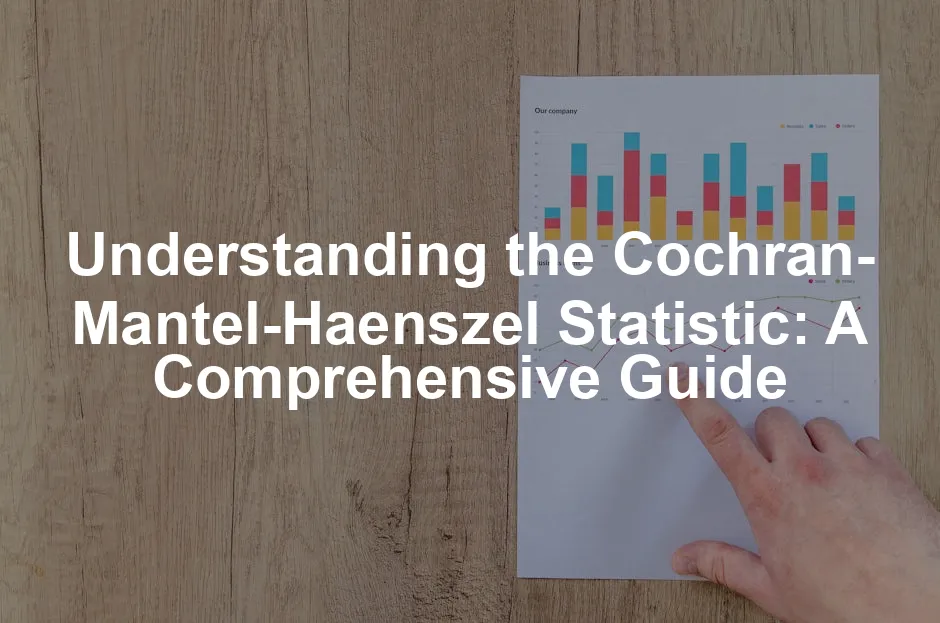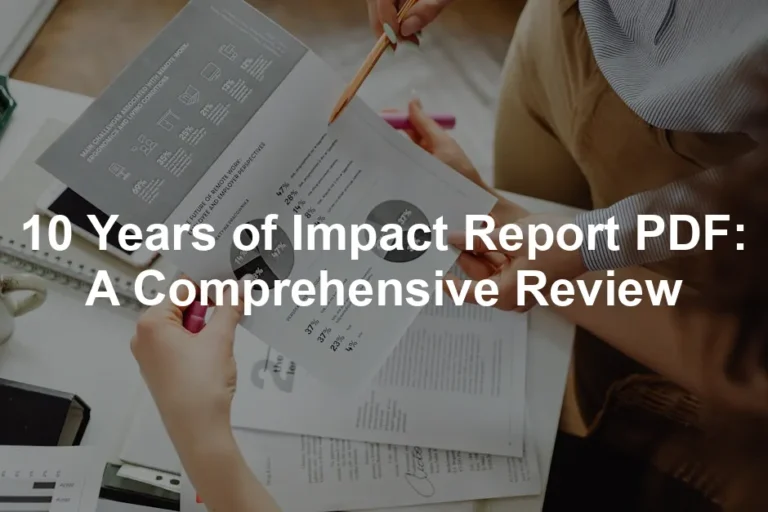Introduction
The Cochran-Mantel-Haenszel (CMH) statistic may sound like a mouthful, but its significance in statistical analysis is anything but trivial. Imagine you’re a detective piecing together clues from multiple cases; the CMH statistic is your magnifying glass, helping you discern patterns that might otherwise go unnoticed. This powerful test is crucial for analyzing stratified categorical data, allowing researchers to evaluate the association between two binary variables while controlling for a third.
So, what exactly does the CMH statistic do? Think of it as a bridge connecting various pieces of information across different strata. When researchers face complex data sets, the CMH statistic steps in to provide clarity. By focusing on binary variables, it simplifies the analysis, especially when multiple groups or conditions are involved. It’s like having a trusty sidekick, tirelessly working behind the scenes to ensure that confounding factors don’t muddy the waters.
The CMH statistic shines particularly bright in observational studies, where random assignment isn’t feasible. Whether it’s examining the impact of a new medication or evaluating social behaviors, the CMH test ensures researchers can draw meaningful conclusions without getting lost in the statistical jungle.
As we navigate through the intricate details of CMH statistics, we’ll uncover its principles, applications, and the nuances that make it indispensable for statisticians across various fields. From understanding its historical roots to exploring real-world applications, this guide aims to equip you with the knowledge you need to harness the power of the CMH statistic. Get ready to unravel the mysteries of categorical data analysis and elevate your statistical skills to new heights!
If you’re diving into the realm of statistics, you might want to enhance your library with some essential reads. One such gem is Cochran-Mantel-Haenszel Statistic: A Practical Guide to Categorical Data Analysis. This book is perfect for those looking to grasp the subtleties of categorical data analysis and is sure to become a staple in your statistical toolkit.

Summary of Key Points
The Cochran-Mantel-Haenszel statistic is a pivotal tool in statistical analysis, particularly for stratified categorical data. It helps researchers assess the association between binary predictors and outcomes while adjusting for confounding variables. Here’s a sneak peek into what we will cover:
- Definition and Importance: Understanding the CMH test and its role in controlling confounding factors. This lays the foundation for grasping the significance of the statistic in real-world data analysis.
- Calculation Methodology: Step-by-step breakdown of how to compute the CMH statistic using contingency tables. Knowing the calculation process can empower you to apply the CMH test accurately.
- Applications: Real-world scenarios where the CMH test shines, such as case-control studies and public health research. These examples will illustrate the practical relevance of the CMH statistic in various fields.
- Related Tests and Concepts: How the CMH test relates to other statistical tests like McNemar’s test and conditional logistic regression. Understanding these relationships can enhance your overall statistical knowledge.
- Limitations: A candid discussion on the constraints of the CMH statistic and scenarios where it may not apply. Awareness of limitations is crucial for making informed decisions in your analyses.
By the end of this article, you’ll not only grasp the mechanics behind the CMH statistic but also appreciate its practical applications in statistical research. Prepare to embark on a journey that transforms your understanding of categorical data analysis!
To further your understanding, consider adding Introduction to Statistics: A Step-by-Step Approach to your collection. This book is an excellent resource for anyone wanting to grasp statistical concepts thoroughly and is particularly user-friendly!

Definition of Cochran-Mantel-Haenszel Statistic
What is the CMH statistic?
The Cochran-Mantel-Haenszel (CMH) statistic is a powerful tool in statistics. It analyzes the relationship between two binary variables while controlling for a third variable, often called a confounder. Imagine you’re trying to determine whether a new medication improves recovery rates. However, you also know that age affects recovery. The CMH statistic helps you isolate the medication’s effect while accounting for age. This test is vital in research areas like epidemiology, where researchers frequently encounter stratified categorical data.
Historical Background
The CMH test bears the names of three prominent statisticians: William G. Cochran, Nathan Mantel, and William Haenszel. Cochran first introduced this method in 1954, laying the groundwork for its application in various fields. Mantel and Haenszel expanded the concept in 1959, solidifying its importance in analyzing data from retrospective studies. Their collaborative work made the CMH statistic a staple in medical research and social sciences, helping researchers control for confounding variables effectively.
For those curious about the mathematical underpinnings of statistics, The Art of Statistics: Learning from Data is a must-read. It’s packed with insights and is perfect for anyone looking to deepen their understanding of data analysis.
Key Components
To understand the CMH statistic, it’s essential to grasp its primary components. The analysis revolves around binary variables, which can take on one of two values—think “yes/no,” “success/failure,” or “case/control.”
The data is organized into strata, which are groups defined by a confounding variable. Each stratum creates a 2×2 contingency table, summarizing the relationship between the two binary variables.
Let’s break down the contingency table structure:
| Treatment | No Treatment | Row Total | |
|---|---|---|---|
| Case | A_i | B_i | N_{1i} |
| Controls | C_i | D_i | N_{2i} |
| Column Total | M_{1i} | M_{2i} | T_i |
In this table, A_i is the count of cases with treatment, B_i is the count of cases without treatment, C_i is the count of controls with treatment, and D_i is the count of controls without treatment. The sums across rows and columns provide the necessary totals for calculation.
When researchers apply the CMH statistic, they effectively analyze multiple 2×2 tables formed by different strata, yielding a weighted average of odds ratios. This approach allows them to examine the overall association between the treatment and outcome while accounting for the effects of the confounding variable.
In summary, the CMH statistic is essential for rigorously analyzing categorical data. Its historical development by Cochran, Mantel, and Haenszel, and its comprehensive structure with binary variables and contingency tables, make it a valuable tool for researchers aiming to draw accurate conclusions from complex datasets.

Applications of the CMH Statistic
Case-Control Studies
The Cochran-Mantel-Haenszel (CMH) statistic is a superstar in public health and epidemiology. It shines brightest in case-control studies, where researchers want to understand the relationship between a binary exposure and a binary outcome. For instance, consider a study looking into the link between smoking and lung cancer. Here, smoking status (yes/no) is the exposure, while lung cancer diagnosis (yes/no) is the outcome.
In such studies, subjects are often grouped by factors like age or gender, creating strata. This stratification is essential for controlling confounding variables that could skew results. By applying the CMH statistic, researchers can calculate a common odds ratio across these strata, offering a clearer picture of how smoking impacts lung cancer risk, independent of age or gender. It’s like shining a light on the truth, cutting through the fog created by confounders.
For those interested in the statistical intricacies of medical research, Statistical Methods in Medical Research is an excellent resource. This book offers insights into the application of statistical techniques specifically tailored for medical research.

Real-World Examples
Let’s take a peek at some specific studies that utilized the CMH test. One standout example is a study conducted by Duggal et al. (2010), which examined the effect of niacin therapy on cardiovascular outcomes. The researchers analyzed data from multiple trials, each providing a 2×2 table of treatment versus control groups. By using the CMH statistic, they discovered a significant reduction in revascularization rates among patients taking niacin compared to those on placebo. This finding has implications for how niacin could be used in clinical settings to improve heart health.
Another illuminating example is the hair whorl study by Lauterbach and Knight (1927). They investigated the relationship between handedness and hair whorl patterns across multiple studies. The CMH test provided a robust analysis, revealing that left-handed individuals had higher odds of having counterclockwise whorls. This research has since influenced further studies in genetics and psychology.
Importance in Observational Studies
The CMH statistic is particularly valued in observational studies, where random assignment to exposure groups isn’t feasible. Imagine trying to assess the effects of a new diet on weight loss. Randomly assigning participants to follow the diet or not could be unethical or impractical. Instead, researchers often collect observational data, comparing those who choose the diet with those who don’t.
Here’s where the CMH statistic steps in. It allows researchers to control for confounding variables by stratifying the data, providing a more accurate estimate of the diet’s effect on weight loss. Without the CMH statistic, these studies risk drawing misleading conclusions, leaving researchers and the public in the dark about the true effectiveness of various diets.
If you’re keen on exploring data science as a whole, R for Data Science is an incredible starting point. This book will guide you through the essentials of data analysis and visualization using R, making your statistical journey much smoother.

In summary, the CMH statistic is indispensable in public health and epidemiology, particularly in case-control studies and observational research. Its ability to adjust for confounding factors while analyzing stratified data makes it a must-have tool for researchers seeking to uncover genuine associations between exposures and outcomes.
Related Tests and Concepts
Comparison with Other Tests
When it comes to statistical tests, the CMH statistic often finds itself in the spotlight, but it’s essential to understand how it compares to other tests like McNemar’s test and conditional logistic regression. McNemar’s test is a go-to for paired data, usually involving two related samples. It evaluates whether the row marginal frequencies in a 2×2 table are equal. While McNemar’s test is powerful for small sample sizes with paired observations, it’s limited to binary outcomes and can’t handle multiple strata effectively.
Conditional logistic regression, on the other hand, opens the door to a broader range of variables. It allows for both continuous and categorical predictors, making it more flexible than CMH. However, CMH’s advantage lies in its simplicity and focus on controlling for confounding without the need for complex model assumptions. The choice between these tests often hinges on the study design and data characteristics, with CMH standing tall in situations demanding straightforward stratification.

For those looking to dive deeper into statistical analysis, The Elements of Statistical Learning is an excellent reference. This book covers the theory and application of statistical learning methods, making it a valuable addition to your library.
Homogeneity of Odds Ratios
Enter the Breslow-Day test, another important player in our statistical toolkit. This test checks the homogeneity of odds ratios across strata, crucial when using the CMH statistic. Why does this matter? If the odds ratios differ significantly across strata, the validity of the common odds ratio estimate from CMH may be compromised.
For instance, imagine a study analyzing the effectiveness of a new medication across different age groups. If younger participants react differently than older ones, the odds ratios will vary, indicating that a single common odds ratio may not accurately represent the overall effect. The Breslow-Day test allows researchers to assess this homogeneity, ensuring the CMH results are trustworthy.
Understanding Confounding
Speaking of confounding, how does it affect study results? Confounding occurs when an external variable influences both the exposure and the outcome, creating a false association. Consider a classic example: researchers studying the link between exercise and heart disease might find a correlation. However, if they fail to account for age—an important risk factor—their conclusions may lead to misguided health recommendations.
The CMH statistic comes to the rescue here. By stratifying data based on potential confounders, it helps researchers isolate the true relationship between exposure and outcome. This ability to mitigate confounding effects is what makes the CMH statistic a cornerstone in the realm of epidemiological research. With CMH, researchers can confidently assert their findings, knowing they’ve accounted for the pesky confounders lurking in the background.

Limitations of the CMH Statistic
Assumptions of the Test
The Cochran-Mantel-Haenszel (CMH) test is a robust statistical method, but it comes with specific assumptions that must hold for valid results. First, the test assumes that the odds ratio remains constant across different strata. This means that the relationship between the exposure and the outcome should not vary significantly among the groups being compared. If this assumption is violated, the CMH results can be misleading.
Moreover, the data must be organized in a way that allows for proper stratification. Each stratum needs to be well-defined, ensuring that it accurately reflects the underlying confounding variable. If the strata are poorly defined, it can introduce bias into the analysis, leading to incorrect conclusions. Finally, independence within the strata is crucial. The observations within each stratum should not influence each other; otherwise, the statistical integrity of the test is compromised.
Limitations in Data Types
While the CMH statistic excels in analyzing binary outcomes, it struggles with non-binary data types. For instance, if your outcomes are continuous or ordinal rather than strictly binary, the CMH test may not be the right fit. This limitation can be a hurdle in fields where data doesn’t neatly fall into “yes/no” categories.
Consider a scenario where researchers analyze patient satisfaction scores on a scale from 1 to 10. The CMH test cannot appropriately handle such nuances, as it’s primarily designed for binary classification. When faced with non-binary outcomes, researchers might need to turn to other statistical methods that can accommodate the complexity of their data, like linear regression or non-parametric tests.
Handling Zero Counts
Handling zero counts in contingency tables is another challenge associated with the CMH statistic. When a stratum contains empty cells—say, no cases of an outcome in a particular category—the analysis can falter. Zero counts can lead to undefined odds ratios, rendering the test unusable for those strata.
To tackle this issue, researchers often employ continuity corrections. This method adjusts the counts slightly to avoid zeroes, thus allowing for a more stable computation of the odds ratio. However, while this correction can be a practical solution, it introduces its own set of complications, potentially affecting the overall validity of the results. Researchers must tread carefully, weighing the pros and cons of continuity corrections versus the implications of omitting strata entirely.
In conclusion, while the CMH statistic is a powerful tool for analyzing stratified data, it’s essential to be mindful of its limitations. From the assumptions that must be met to the challenges posed by data types and zero counts, understanding these factors is critical for accurate analysis and interpretation of results.

FAQs
What types of data are suitable for the CMH test?
The Cochran-Mantel-Haenszel (CMH) test is ideal for stratified categorical data. It works best when you’re dealing with two binary variables and a third confounding variable. Imagine a study on smoking and lung cancer; you can analyze case-control data, controlling for age or gender. The CMH test shines in case-control studies, where researchers can assess the association while accounting for stratification. This flexibility allows for handling multiple 2×2 contingency tables effectively, making the CMH test a go-to for categorical data analysis.
How does CMH handle confounding variables?
The CMH test effectively addresses confounding by stratifying data into different groups based on the confounding variable. By creating separate 2×2 tables for each stratum, researchers can isolate the effect of the primary exposure on the outcome. For example, if age is a confounder, the CMH test separates participants into age categories. This approach ensures that the analysis reflects the true relationship between the exposure and outcome while minimizing the impact of confounding variables.
Can the CMH statistic be used in regression analysis?
While the CMH statistic is primarily designed for analyzing categorical data, it can complement regression analysis. However, it doesn’t replace it. Researchers often use CMH to assess associations in observational studies, which can inform regression model building. By identifying potential confounders through CMH, analysts can adjust their regression models accordingly. However, keep in mind that CMH focuses on stratified data rather than continuous variables typically handled in regression.
What software can I use to perform a CMH test?
Several statistical software packages can perform the CMH test. Popular choices include R, SAS, and Minitab. For R users, packages like `stats` and `samplesizeCMH` enable easy implementation of the CMH test. In SAS, the PROC FREQ procedure is useful for conducting the test. Minitab also simplifies the process with a user-friendly interface, allowing researchers to analyze their data without extensive coding. Each software provides comprehensive documentation to help users navigate the CMH test efficiently.
How do I interpret the results of a CMH test?
Interpreting CMH test results involves examining the common odds ratio and its associated p-value. A common odds ratio greater than 1 suggests a positive association between the exposure and outcome, while a value less than 1 indicates an inverse relationship. Additionally, the p-value indicates the statistical significance of the association. A p-value below 0.05 generally suggests a significant association. Always consider the context of your study and the strata used in the analysis when interpreting results to ensure meaningful conclusions.
Please let us know what you think about our content by leaving a comment down below!
Thank you for reading till here 🙂
For a deeper understanding of how class boundaries in statistics can enhance your research applications, check out understanding class boundaries in statistics for research applications in 2024.
To explore the differences between practical significance and statistical significance, visit practical significance versus statistical significance.
All images from Pexels




